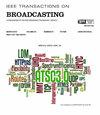Multimedia Classification via Tensor Linear Discriminant Analysis
IF 3.2
1区 计算机科学
Q2 ENGINEERING, ELECTRICAL & ELECTRONIC
引用次数: 0
Abstract
Linear discriminant analysis (LDA) is a well-known feature-extraction technique for data analytic and pattern classification. As the dimensionality of multimedia data has increased in this big era, it is often to characterize data by tensors. Over the past two decades, researchers have thus explored to extend LDA to the general tensor space, especially in two common ways: LDA of tensors using tensor decomposition methods (by conversion of tensors to matrices) and LDA of tensors built upon the T-product. However, both of the aforementioned approaches have restrictions thereby. A critical problem about how to carry out LDA of arbitrary scatter tensors based on the Einstein product still remains unsolved by the existing methods. Therefore, we propose a novel tensor LDA (a.k.a. TLDA) approach, which can carry out the LDA of arbitrary-dimensional scatter-tensors without any need of tensor decomposition. Besides, for reducing the computation time, we also design a parallel paradigm to execute our proposed TLDA in this work. Numerical experiments conducted over real multimedia data demonstrate the efficacy of our proposed new TLDA in terms of classification accuracy. Moreover, the comparison of the classification accuracies, computational-complexities, and memory-complexities of our proposed novel TLDA scheme and other existing tensor-based LDA methods is made. By leveraging TLDA for high-dimensional feature extraction, segmentation, and user-item interaction data processing, future multimedia recommendation systems can facilitate more accurate, engaging, and satisfactory user experience over the Internet.通过张量线性判别分析进行多媒体分类
线性判别分析(LDA)是一种用于数据分析和模式分类的特征提取技术。在这个大时代,随着多媒体数据维数的增加,人们往往用张量来描述数据。在过去的二十年里,研究人员探索了将LDA扩展到一般张量空间的方法,特别是两种常见的方法:使用张量分解方法(通过将张量转换为矩阵)的张量LDA和基于t积的张量LDA。然而,上述两种方法都有其局限性。如何基于爱因斯坦积实现任意散射张量的LDA,是现有方法尚未解决的一个关键问题。因此,我们提出了一种新的张量LDA(又名TLDA)方法,它可以在不需要张量分解的情况下对任意维的散射张量进行LDA。此外,为了减少计算时间,我们还设计了一个并行范例来执行我们提出的TLDA。在真实多媒体数据上进行的数值实验证明了我们提出的新TLDA在分类精度方面的有效性。此外,我们提出的新TLDA方案与其他现有的基于张量的LDA方法在分类精度、计算复杂度和内存复杂度方面进行了比较。通过利用TLDA进行高维特征提取、分割和用户项目交互数据处理,未来的多媒体推荐系统可以在互联网上促进更准确、更吸引人、更令人满意的用户体验。
本文章由计算机程序翻译,如有差异,请以英文原文为准。
求助全文
约1分钟内获得全文
求助全文
来源期刊

IEEE Transactions on Broadcasting
工程技术-电信学
CiteScore
9.40
自引率
31.10%
发文量
79
审稿时长
6-12 weeks
期刊介绍:
The Society’s Field of Interest is “Devices, equipment, techniques and systems related to broadcast technology, including the production, distribution, transmission, and propagation aspects.” In addition to this formal FOI statement, which is used to provide guidance to the Publications Committee in the selection of content, the AdCom has further resolved that “broadcast systems includes all aspects of transmission, propagation, and reception.”
 求助内容:
求助内容: 应助结果提醒方式:
应助结果提醒方式:


